Coupling of Cellular Processes and Their Coordinated Oscillations under Continuous Light in Cyanothece sp. ATCC 51142, a Diazotrophic Unicellular Cyanobacterium
- PMID: 25973856
- PMCID: PMC4431719
- DOI: 10.1371/journal.pone.0125148
Coupling of Cellular Processes and Their Coordinated Oscillations under Continuous Light in Cyanothece sp. ATCC 51142, a Diazotrophic Unicellular Cyanobacterium
Abstract
Unicellular diazotrophic cyanobacteria such as Cyanothece sp. ATCC 51142 (henceforth Cyanothece), temporally separate the oxygen sensitive nitrogen fixation from oxygen evolving photosynthesis not only under diurnal cycles (LD) but also in continuous light (LL). However, recent reports demonstrate that the oscillations in LL occur with a shorter cycle time of ~11 h. We find that indeed, majority of the genes oscillate in LL with this cycle time. Genes that are upregulated at a particular time of day under diurnal cycle also get upregulated at an equivalent metabolic phase under LL suggesting tight coupling of various cellular events with each other and with the cell's metabolic status. A number of metabolic processes get upregulated in a coordinated fashion during the respiratory phase under LL including glycogen degradation, glycolysis, oxidative pentose phosphate pathway, and tricarboxylic acid cycle. These precede nitrogen fixation apparently to ensure sufficient energy and anoxic environment needed for the nitrogenase enzyme. Photosynthetic phase sees upregulation of photosystem II, carbonate transport, carbon concentrating mechanism, RuBisCO, glycogen synthesis and light harvesting antenna pigment biosynthesis. In Synechococcus elongates PCC 7942, a non-nitrogen fixing cyanobacteria, expression of a relatively smaller fraction of genes oscillates under LL condition with the major periodicity being 24 h. In contrast, the entire cellular machinery of Cyanothece orchestrates coordinated oscillation in anticipation of the ensuing metabolic phase in both LD and LL. These results may have important implications in understanding the timing of various cellular events and in engineering cyanobacteria for biofuel production.
Conflict of interest statement
Figures
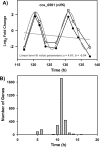

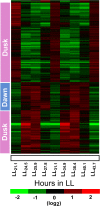

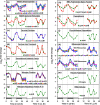
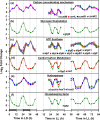
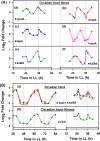

Similar articles
-
Transcriptomic and proteomic dynamics in the metabolism of a diazotrophic cyanobacterium, Cyanothece sp. PCC 7822 during a diurnal light-dark cycle.BMC Genomics. 2014 Dec 29;15(1):1185. doi: 10.1186/1471-2164-15-1185. BMC Genomics. 2014. PMID: 25547186 Free PMC article.
-
Enhanced Nitrogen Fixation in a glgX-Deficient Strain of Cyanothece sp. Strain ATCC 51142, a Unicellular Nitrogen-Fixing Cyanobacterium.Appl Environ Microbiol. 2019 Mar 22;85(7):e02887-18. doi: 10.1128/AEM.02887-18. Print 2019 Apr 1. Appl Environ Microbiol. 2019. PMID: 30709817 Free PMC article.
-
Global transcriptomic analysis of Cyanothece 51142 reveals robust diurnal oscillation of central metabolic processes.Proc Natl Acad Sci U S A. 2008 Apr 22;105(16):6156-61. doi: 10.1073/pnas.0711068105. Epub 2008 Apr 21. Proc Natl Acad Sci U S A. 2008. PMID: 18427117 Free PMC article.
-
Unicellular cyanobacteria with a new mode of life: the lack of photosynthetic oxygen evolution allows nitrogen fixation to proceed.Arch Microbiol. 2010 Oct;192(10):783-90. doi: 10.1007/s00203-010-0621-5. Epub 2010 Aug 29. Arch Microbiol. 2010. PMID: 20803290 Review.
-
Nitrogen fixation and photosynthetic oxygen evolution in cyanobacteria.Res Microbiol. 2003 Apr;154(3):157-64. doi: 10.1016/S0923-2508(03)00029-9. Res Microbiol. 2003. PMID: 12706503 Review.
Cited by
-
Metabolic engineering of a fast-growing cyanobacterium Synechococcus elongatus PCC 11801 for photoautotrophic production of succinic acid.Biotechnol Biofuels. 2020 May 18;13:89. doi: 10.1186/s13068-020-01727-7. eCollection 2020. Biotechnol Biofuels. 2020. PMID: 32467730 Free PMC article.
References
Publication types
MeSH terms
Substances
Associated data
- Actions
LinkOut - more resources
Full Text Sources
Other Literature Sources
Research Materials

